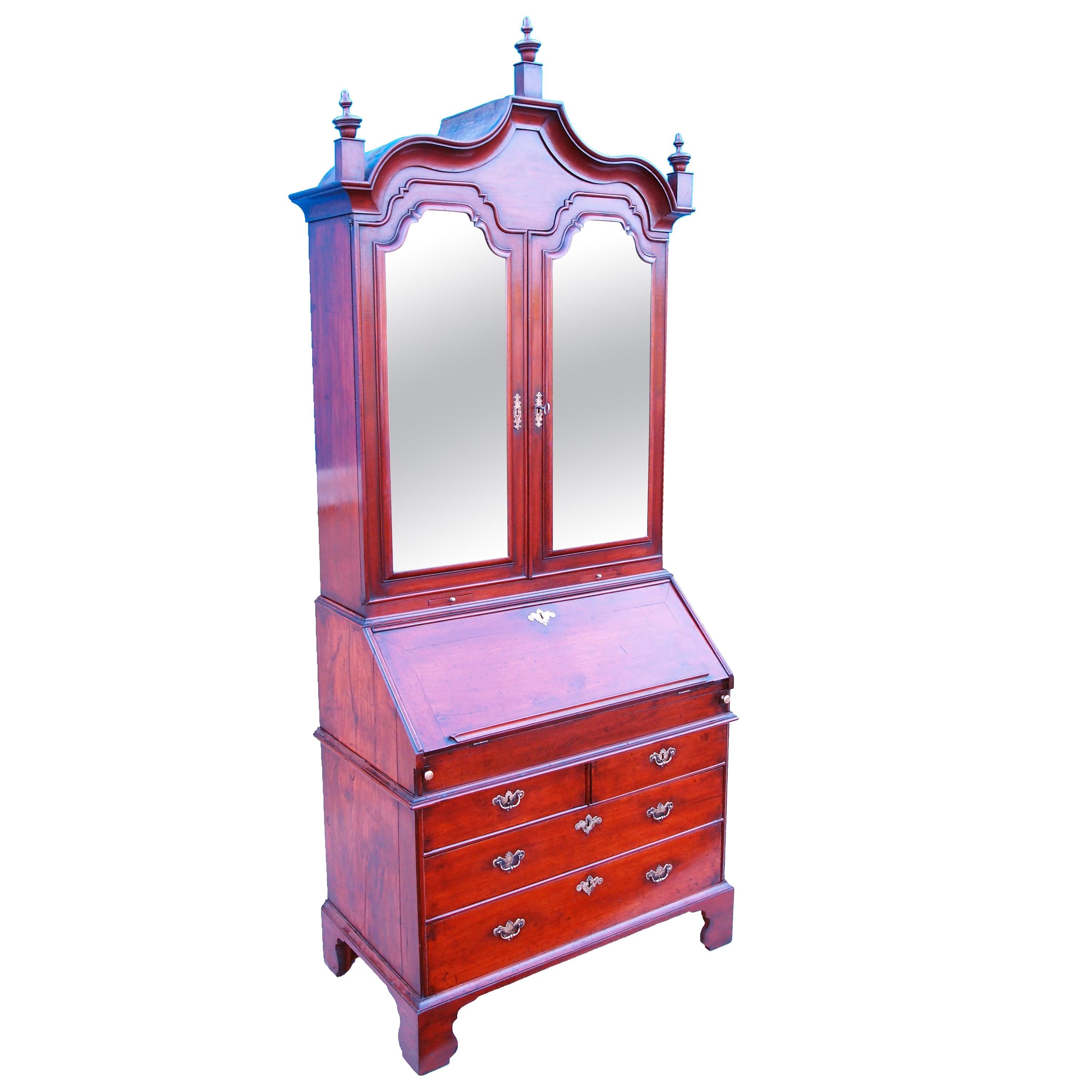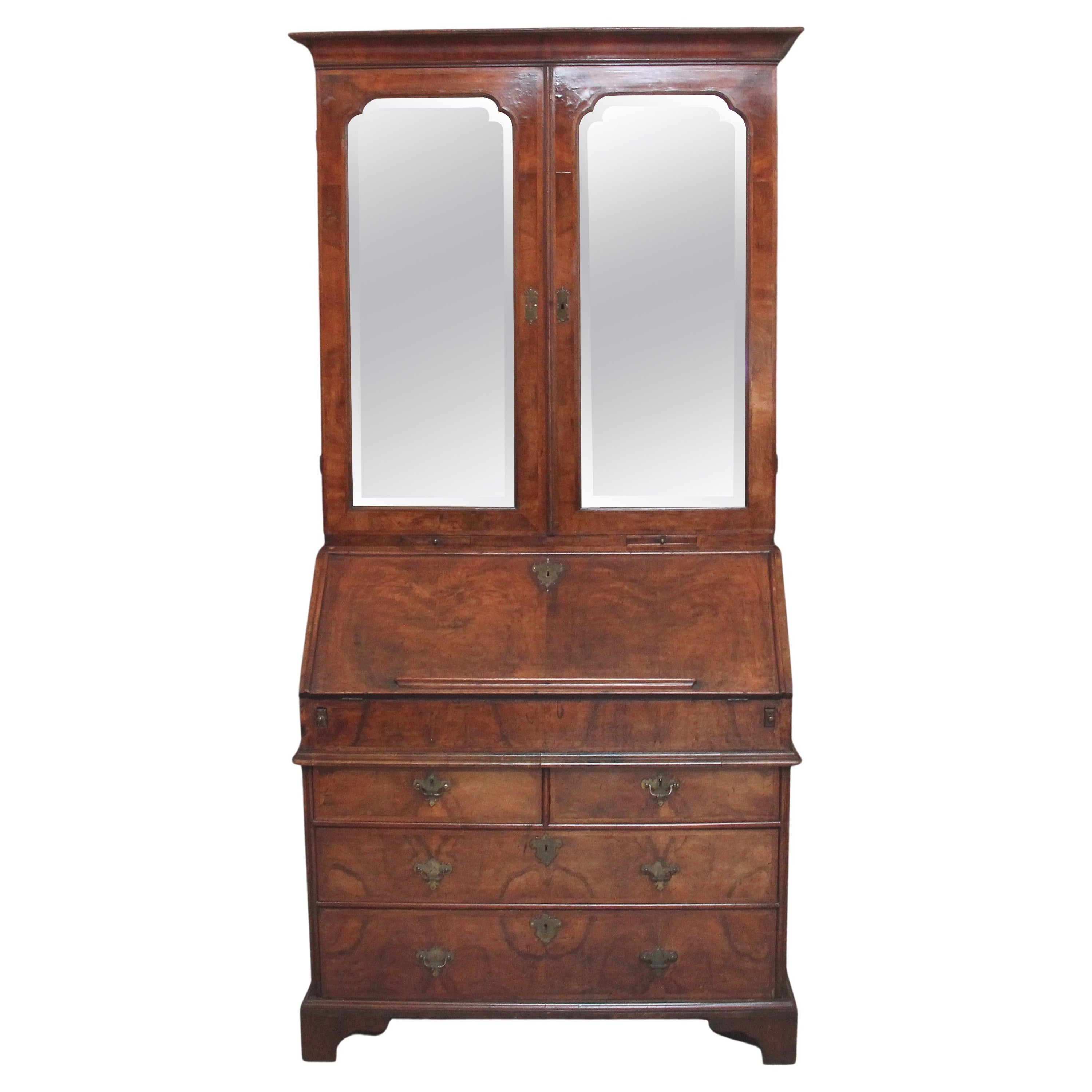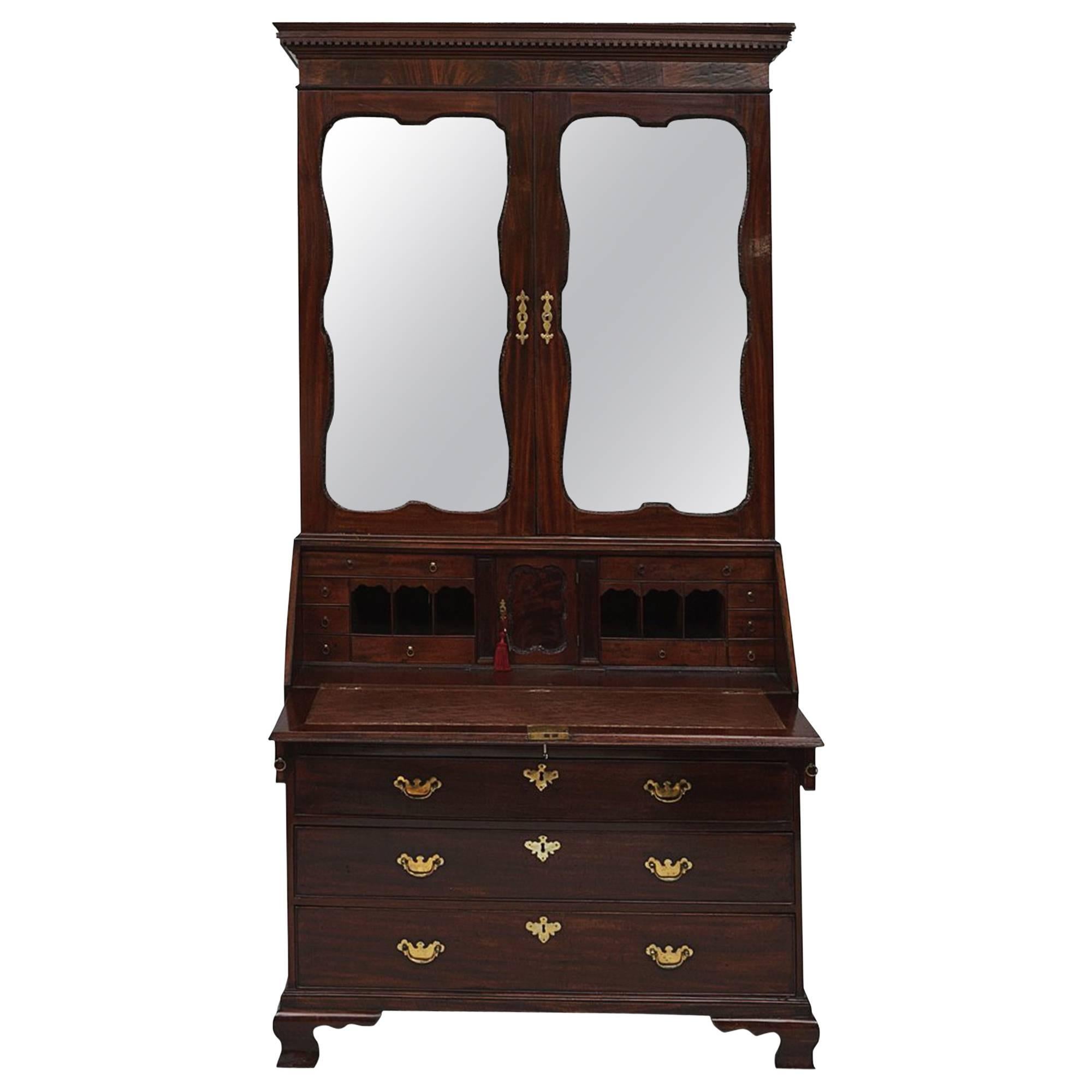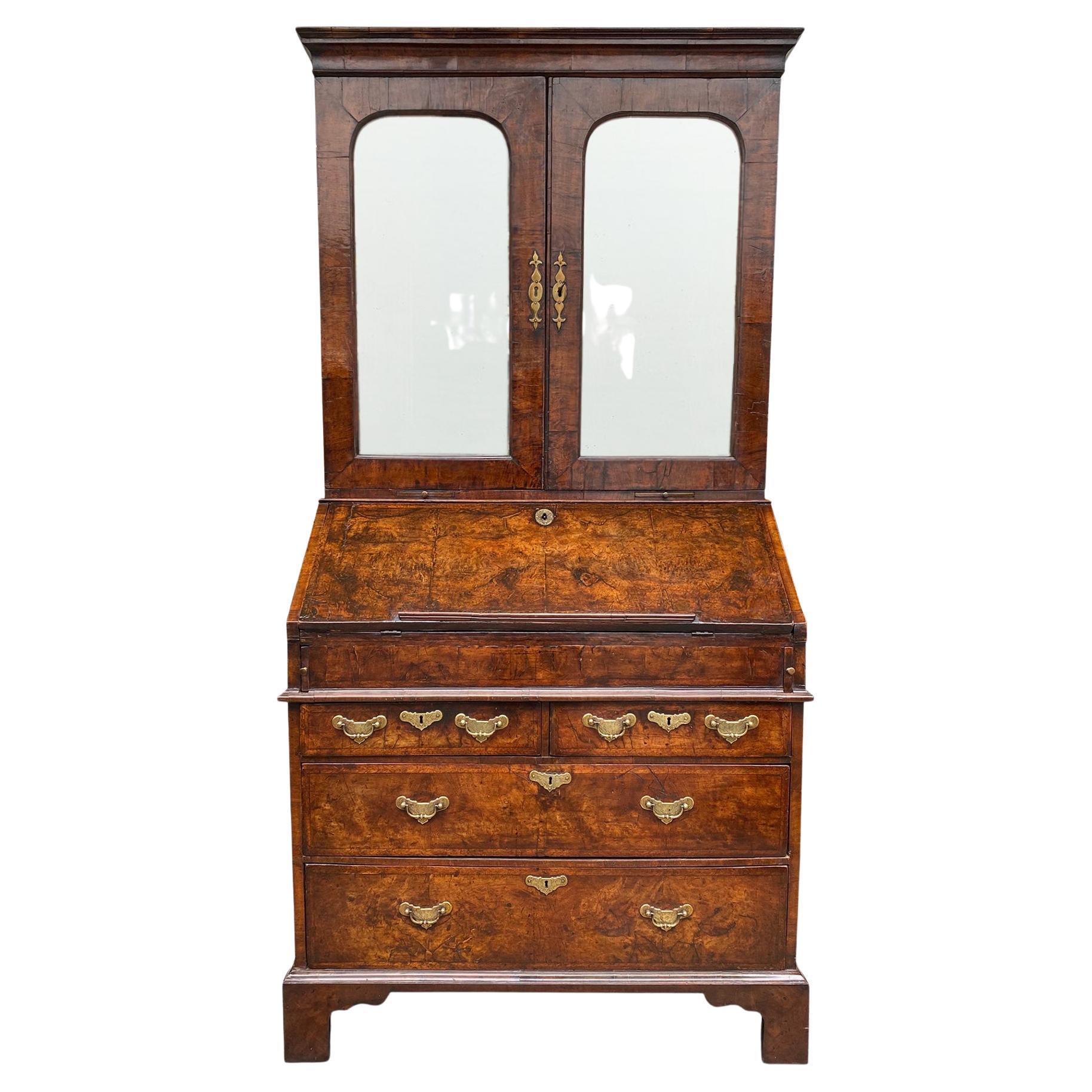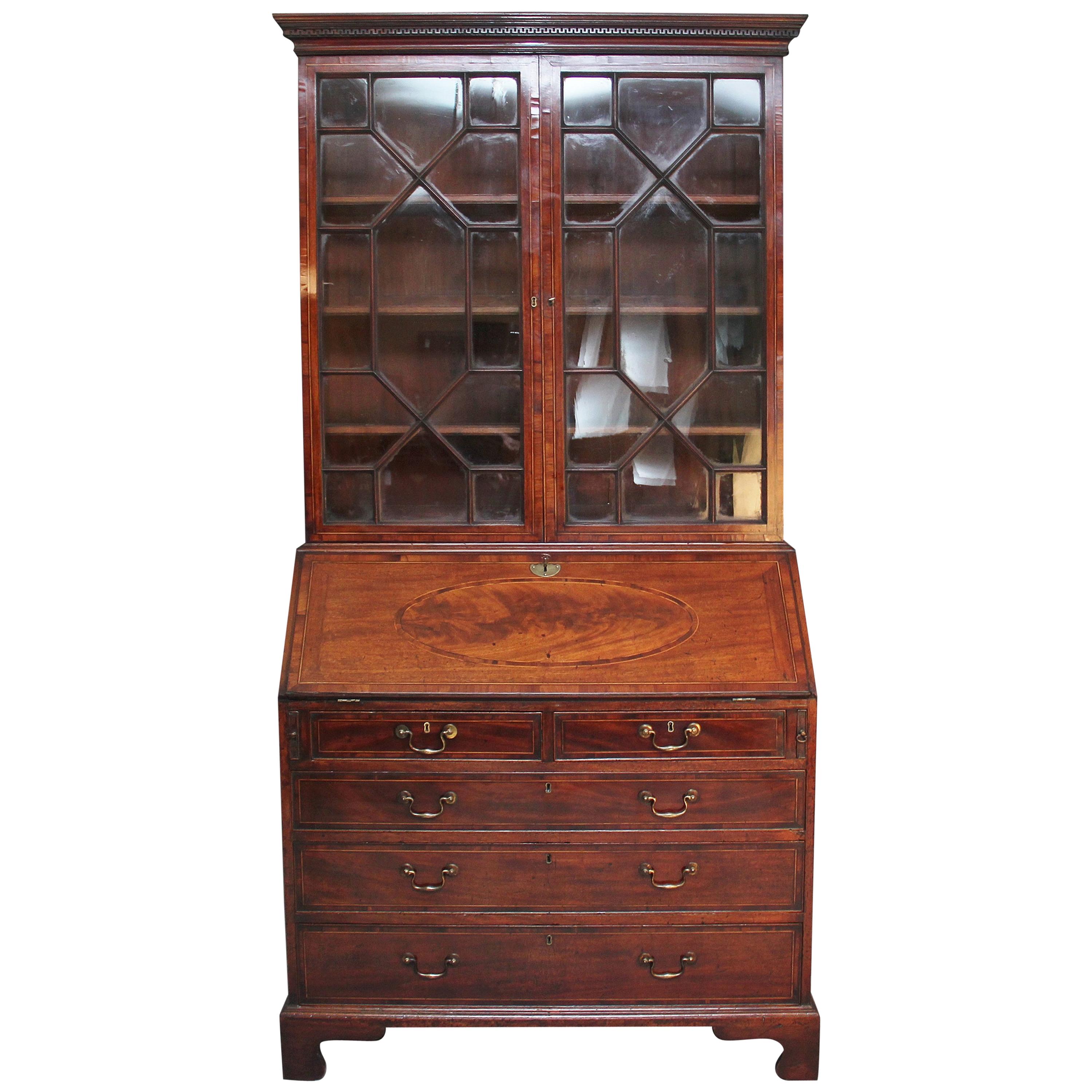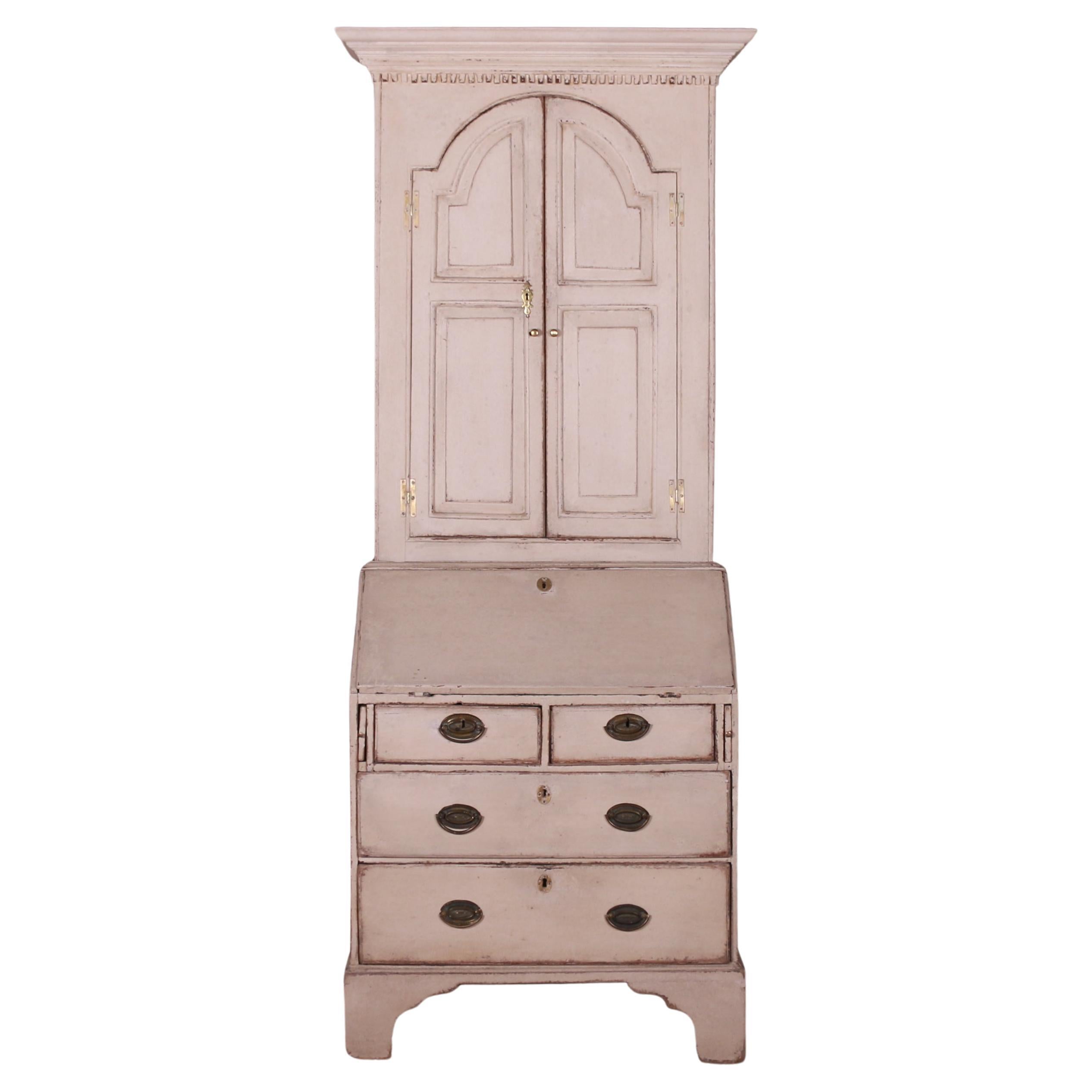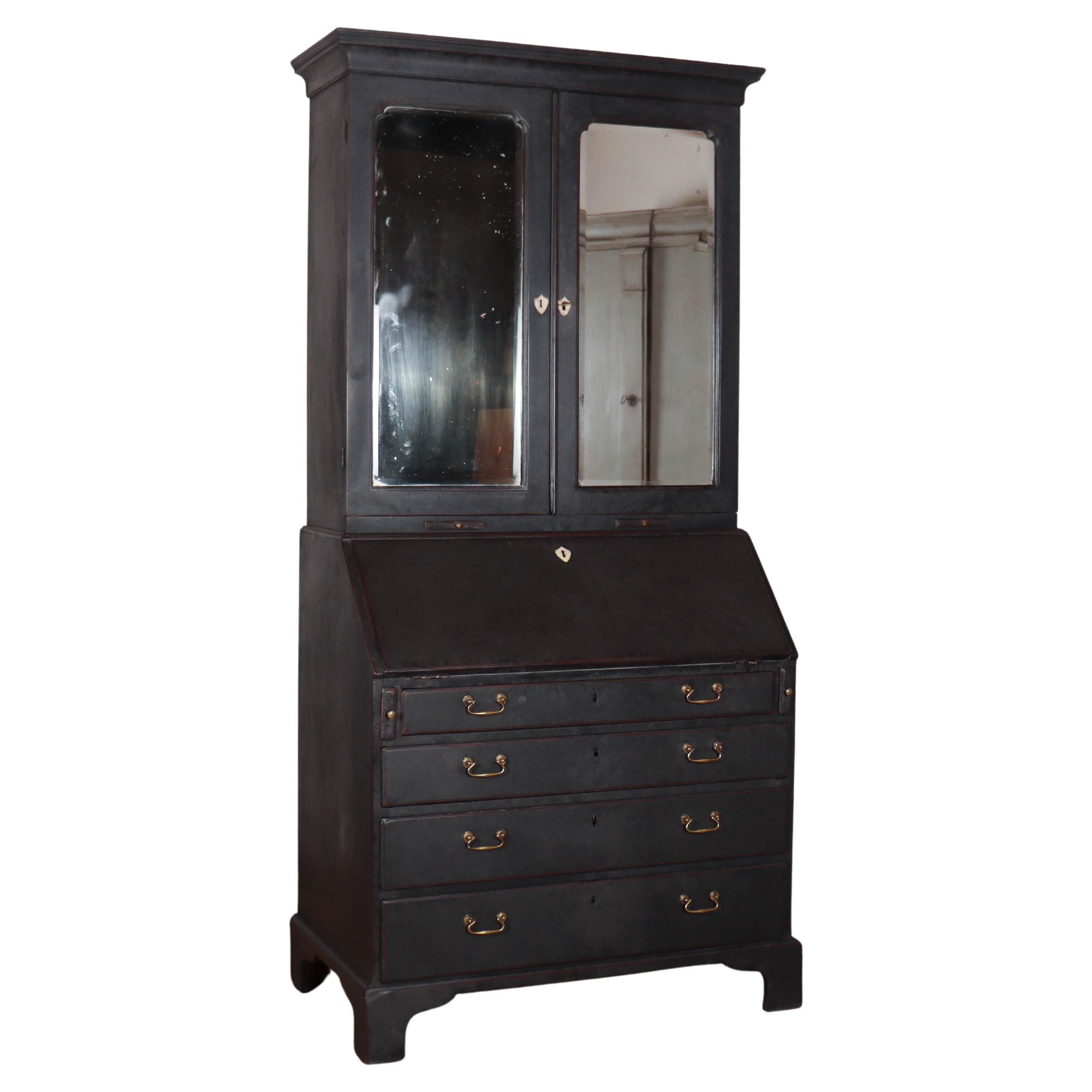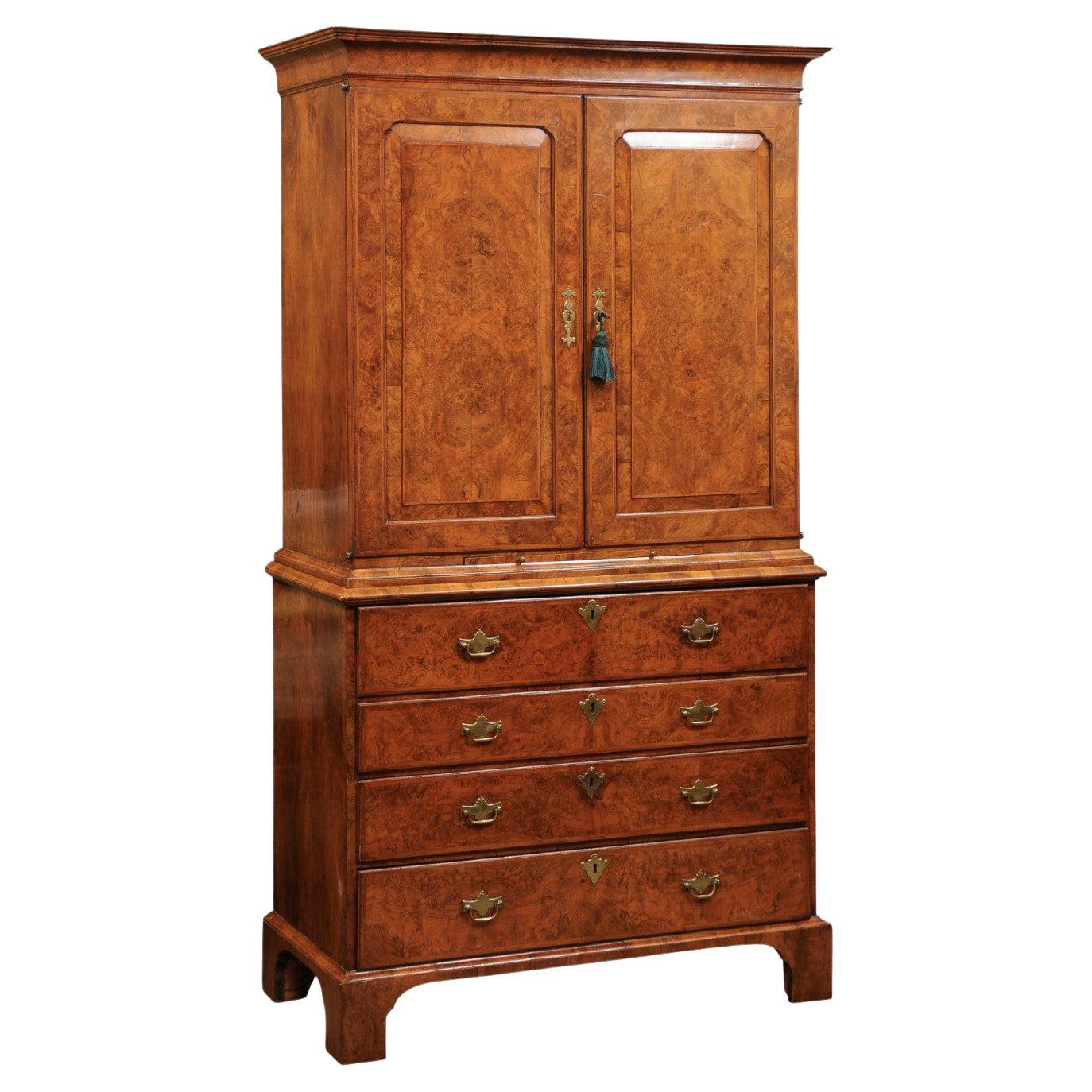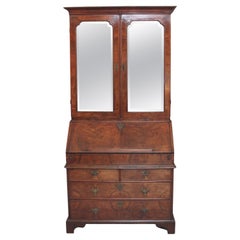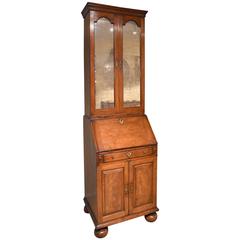
Early 18th Century Solid Walnut Bureau bookcase mirrors bun feet cupboard doors
View Similar Items
1 of 5
Early 18th Century Solid Walnut Bureau bookcase mirrors bun feet cupboard doors
About the Item
You May Also Like
- Early 18th Century Solid Walnut English Bureau BookcaseLocated in Bedfordshire, GBA delightful early 18th century solid walnut bureau bookcase having attractive double domed top with replacement mirror plates to panelled doors enclosing well fitted interior abov...Category
Antique Early 18th Century English Georgian Bookcases
MaterialsWalnut
$13,892 Sale Price25% Off - Early 18th Century George I Figured Walnut Bureau BookcaseBy Peter MillerLocated in Oxfordshire, United KingdomA superb and exceptionally well proportioned early 18th century figured walnut ‘pagoda topped’ double dome bureau bookcase, circa 1720 England. The upper section is surmounted with what is believed to be the original solid walnut finials and soft bevelled mirror plates, opening to a removal bank of walnut veneered and feather banded drawers, cantered by pigeonholes below two shelves. Candle slides are neatly stowed below the bookcase doors to reflect the light. To the moulded bureau, the fall opens to reveal pigeonholes, long and short asymmetric drawers each beautifully veneered in figured walnut and feather banded, cantered by a cupboard door which neatly conceals an open compartment and drawer. Below the fall, two short and two long graduating oak lined drawers are each book-matched in superb sections of hand-cut figured walnut veneers over bun feet. It should be noted that this exceptional desk and bookcase, is not only of the finest cuts of figured walnut veneer but exquisitely made at the pinnacle of design which had gradually evolved predominantly in London, during the late 17thand early 18thcentury. The actual description 'desk-and-bookcase' appears to be first recorded in the accounts of the Royal cabinet-maker Gerrit Jensen (fl.1680-d.1715) who supplied several for the Royal Household from 1710 (Bowett, op. cit.), and another described as 'a walnut writing desk, the top for books and patons and glass in the doors asked' for the 5th Earl of Salisbury, Hatfield House. Another maker of this form of desk was the London cabinet-maker John Gumley (1691-1727) who advertised in Richard Steele's Lover on April 24 1714 that he 'hath taken for a Ware-house, and furnished all the upper part of the New Exchange in the Strand' continuing with an extensive list of his stock including 'Desks and Bookcases.' In 1714 he supplied one of these in walnut to James 1st Duke of Montrose for the sum of £11. Russian cabinetwork of this period was strongly influenced by Tsar Peter I return to Russia after his studies in London. He subsequently sent twenty-four cabinetmakers who were working in Amsterdam to London to train as furniture makers. One of these cabinetmakers named Fedor Martynov made furniture for the Empress Anna Ioannovna. Martynovs drawings are almost identical to the present piece. Literature Mallett’s Great English Furniture, London: Bullfinch Press 1991, p.248, fig 287, by Lanto Synge, English Furniture 1660-1714 From Charles II to Queen Anne, by Dr Adam Bowett, Woodbridge: Antique Collector’s Club, 2002 Chapter 7 Case Furniture 1689–1714 pp.221-223 fig. 7:53 A walnut bureau bookcase of the same form and period sold from the private collection of Patricia Kluge...Category
Antique Early 18th Century British George I Bookcases
MaterialsWalnut
- Early 18th Century Walnut Bureau BookcaseLocated in Martlesham, GBEarly 18th century walnut bureau bookcase, the shaped cornice above a mirrored front bookcase with the two doors opening to reveal ...Category
Antique 1740s British George II Bookcases
MaterialsWalnut
- A rare small early-18th century walnut bureau bookcase/ cabinetLocated in Lymington, GBA rare, small, English George I / II- period walnut bureau bookcase/ cabinet with a moulded swan-neck pediment. Circa 1727-1730. The bevelled mirror plate has a candle slide below. ...Category
Antique 18th Century English George I Bookcases
MaterialsWalnut
- A Fine Early 18th Century George I Burr Walnut Bureau Bookcase, Circa 1715Located in Oxfordshire, United KingdomA fine early 18th-century George I burr walnut veneered bureau bookcase of diminutive proportions, circa 1715. In two parts divided by a cross-grain moulding. The upper section has a cavetto cornice above a large single door...Category
Antique Early 18th Century English George I Bookcases
MaterialsOak, Walnut, Burl
- 18th Century George II Bureau Bookcase with Mirrored DoorsLocated in Dublin 8, IE18th century George II Bureau bookcase with mirrored doors. The stepped cornice above two mirrored doors opening to reveal shelving above slo...Category
Antique 1750s Irish George II Bookcases
MaterialsMirror, Mahogany
